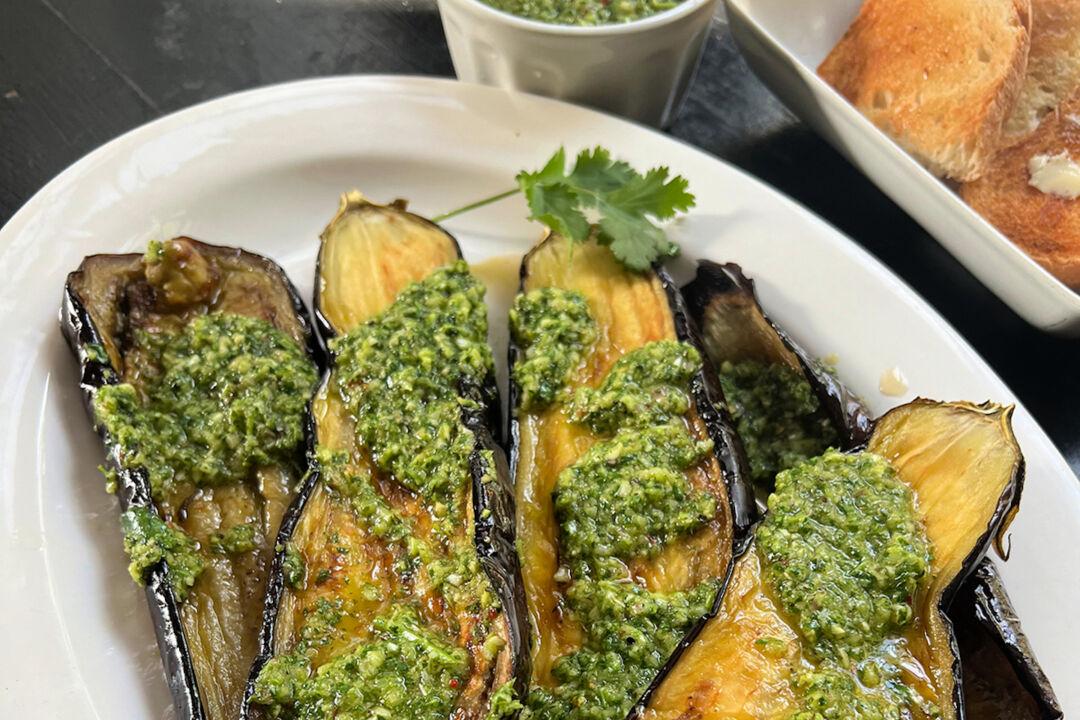One of the dishes Reuben Kendall cooked for a feast this past Christmas was flavored with pumpkin spice—cinnamon, nutmeg, cloves, and ginger.
There is nothing unusual in that. Except the recipe for the dish is 600 years old.
Pumpkin spice, that quintessential modern ingredient, has been popular since the 15th century.
“It is on everything. They put it on meat. They put it on sweet porridges, they put it on pies and desserts. They probably used pumpkin spice in the Middle Ages more than we do in the month of November,” Kendall says.
And it isn’t just pumpkin spice. Almond milk, too, was an essential item in English and French homes of the nobility in the 1400s.
For the past few years, Kendall and 20 or so likeminded friends have been sitting down to medieval feasts for Christmas. It is a natural indulgence for the friends, who tend to go to Renaissance fairs and belong to the Society for Creative Anachronism.
Not everyone dressed for the occasion, but some came in medieval-style clothes. One person came as Gandalf from “The Lord of the Rings,” which may not be historically accurate but was in the spirit of the evening.
Kendall is 34 and lives in St. Louis. He was raised on the Erroll Flynn version of “The Adventures of Robin Hood,” the 1985 film “Ladyhawke,” Rosemary Sutcliff’s trilogy of King Arthur books and what he calls “cheesy Arthurian books” that were popular for young readers just before the Harry Potter books came out.
“As an adult, I appreciate going back and looking at the actual history of the 15th century. The 15th century was really significant because it was on the cusp of a lot of change, just before the Age of Imperialism” and a modernization of religion, he says.
“It’s a period of history that informs a lot of what we see today. And it’s also healthy to go back and see what really was the history, not an idealized or bowdlerized version of history.”
This interest led him to search the internet for original 15th century recipes. Most of the medieval dishes he cooks come from two manuscripts posted by the University of Michigan, and a third, a modern English translation of a French cookbook from 1420 called “De fait de cuisine.”
A whole online community has formed over a shared interest in medieval cookery, he says. When he started, he did not know that other people were interested in recipes that dated back to the time of Henry V. But now, he can see recipes that others have tried, and their tips for cooking them.
In previous years, Kendall cooked the Christmas meal with some of the other guests, but circumstances this year required him to make it all himself. And what a feast it was.
The meal started with braised shoulder of venison, seasoned with little more than salt and pepper. This was served with a dish called frumenty, which is hulled wheat that is boiled until it is soft. Then the water is poured out and replaced with milk. Saffron is added—“because saffron is expensive and beautiful,” he says—and it is boiled again until it becomes a thickened porridge.
The combination of venison and frumenty was served at the start of every significant ceremonial feast, he says, and one dish was always served with the other. Frumenty continued to be popular in England into the Victorian era, becoming more elaborately flavored as the centuries went on. But in the 1400s, it was still a simple dish with few ingredients.
The next dish was pears poached in sweetened red wine spiced with the pumpkin spice mixture. It goes especially well with the venison, Kendall says, and is so good that his friends request it every time he cooks 15th century food.
Also at the feast was pork loin stuffed with an abundance of herbs (sage, mace, cloves, black and white pepper), toasted rice, dried apricots, and raisins. Raisins were an especially popular ingredient at the time, he says.
The author of “De fait de cuisine,” in which this recipe appears, would use a liquid made with spinach to paint the pork loin a bright green, a shade Kendall compares to Jolly Rancher green apple candy. Kendall thought about painting the loin for this meal, but decided against it at the last minute.
“The end result is not delicious looking. It is a lot of work for a lot of spectacle, but the spectacle is not appetizing,” he says.
The pork was served with a pea potage, which Kendall calls “the great-granddaddy of split-pea soup.”
“It’s not delicate. If you stick your spoon in it, the spoon will stand up.”
The soup is heavily spiced with cinnamon, pepper, ginger, and herbs. It is cooked with a lot of white wine and topped with onions fried in oil and finished with a splash of vinegar.
Salads were popular in the 15th century, so he made a carrot salad with a large amount of finely minced herbs—parsley, dill, and mint—and mixed with vinegar and oil.
And he also served a dish of cabbage sautéed in broth, with bacon.
Dessert was a fruit cake wrapped in marzipan, but the recipes came from the 18th century. And a great quantity of wine was also consumed.
It was a meal fit for kings. And also Gandalf.








